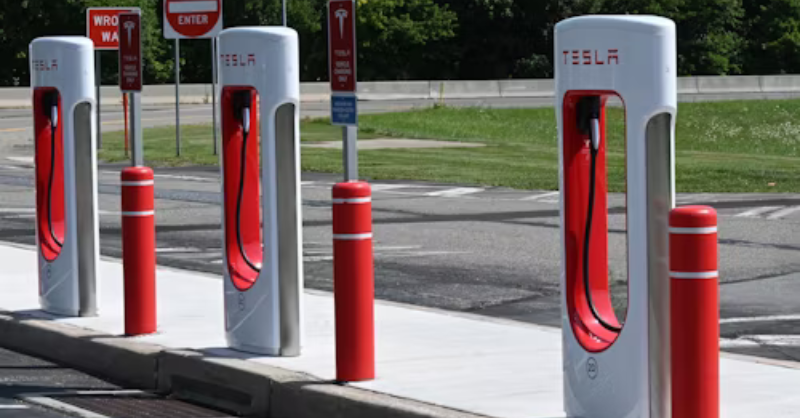
How important are public chargers?
If cheaper EVs start to become the norm soon, will the absence of fast public EV chargers hold back adoption? Sadly yes.
This is the second blog in a series of three on some of the key issues we need to consider in relation to EV's. This considers the question - if cheaper EV's start to become the norm soon, will the absence of fast public EV chargers hold back adoption?
Last week the IEA published their 2024 Global EV outlook. This is significant for two reasons.
First, transport is a really important sector for decarbonisation. According to Our World in Data, transport accounts for around 20% of global CO2 emissions, with c. 75% coming from ground transport. So, a good problem to solve.
And second, it's importance comes from the fact that we have a solution that reduces transport emissions, one that we know works. Along with decarbonization of our electricity network, transport is the most investible 'green' theme.
That solution is obviously Electric Vehicles. We can build them at scale, they are getting cheaper, and, assuming we decarbonise electricity generation, they can make a real difference. But, it can be complicated.
We are sure you will have seen a lot of coverage of the report. So, rather than rehash a summary, we have picked three aspects where we think a bit of thought is needed.
These are - how do we expand EV's outside of the current three big markets - is this the decade of the Chinese mass market EV, what is happening on EV charging, and advances in battery technology. What links them all, as with most things to do with EV's, is China.
This blog considers Topic 2: If cheaper EV's start to become the norm soon, will the absence of fast public EV chargers hold back adoption? The answer in many markets is probably yes, but it doesn't have to be that way.
This article featured in What Caught Our Eye, a weekly email featuring stories we found particularly interesting during the week and why. We also give our lateral thought on each one. What Caught our Eye is available to read in full by members.
If you are not a member yet, you can read What Caught Our Eye when it comes out direct in your email inbox plus all of our blogs in full...

Click this link to register 👉🏾 https://www.thesustainableinvestor.org.uk/register/
In topic 1 we talked about the growing importance of cheaper EV's. In topic 2 we think some more about one of the possible barriers to mass market adaption - charging, especially fast charging.
First, the good news. According to the IEA report, the global number of installed public charging points was up 40% in 2023 relative to 2022. And growth for fast chargers outpaced that of slower ones. As they say:
In major EV markets, the deployment of charging points is continuing apace thanks to targeted policies. Broad, affordable access to public charging infrastructure will be needed for a mass-market switch to electric transport and to enable longer journeys – even if most charging continues to take place privately in residential and workplace settings.
To reach EV deployment levels in the IEA Announced Policies Scenario, public charging needs to increase sixfold by 2035.
The pace of installation of public EV chargers is growing, up 40% (the top two colors in the chart below). And an increasing percentage are fast chargers, up 55% (the very top color). This is important because for many drivers, charging on the go needs to be quick. If you are driving for work, or travelling a long distance for a holiday, you don't want to be sitting around for hours as your car charges back up.

For most people the number of fast public chargers is important. It might not be rational, after all the vast majority of our journeys are short, and most are either to or from our home.
So, if you can have an 'at home' slow charger (preferably a smart one), then you will only use public fast chargers very occasionally. But, for the odd occasions you will need one, they are important. Very few people I know would take an EV on holiday, if fast chargers were not available.
So, if most people will charge at home, and if public fast chargers are something most of us will only use occasionally, what does this mean for who pays for them?
If we look at China, you can see this already happening. They had a 2025 policy ambition of EV car sales share above 35%. Which they have already achieved ! And they are now shifting focus to charging infrastructure development, targeting full coverage in cities and on highways by 2030, as well as expanded rural coverage.
And this is likely to further open up the gap (in fast public charging) between China and the rest of the world. China is the orange portion of the bars !

But remember, the stand alone economics of public fast chargers at scale could be problematic. If we only have a few of them, located in areas of high demand, their utilisation is probably going to be enough for them to fully pay their way. Even at lower EV market share levels. But as we get more of them in less popular areas, the economics gets tougher. And yet we need them pretty much everywhere if EV's are going to become the mass market product that societies and governments hope for.
This is fine if you are China. But what about the rest of us?
The mix of fast public and private/at work chargers is something we need to think about. And given that some countries are already approaching the innovation S curve shift into the mass market, we need to think about it soon. It's a topic we wrote about back in March 2023.
👉🏾 Do we have enough EV chargers?

Please read: important legal stuff.

